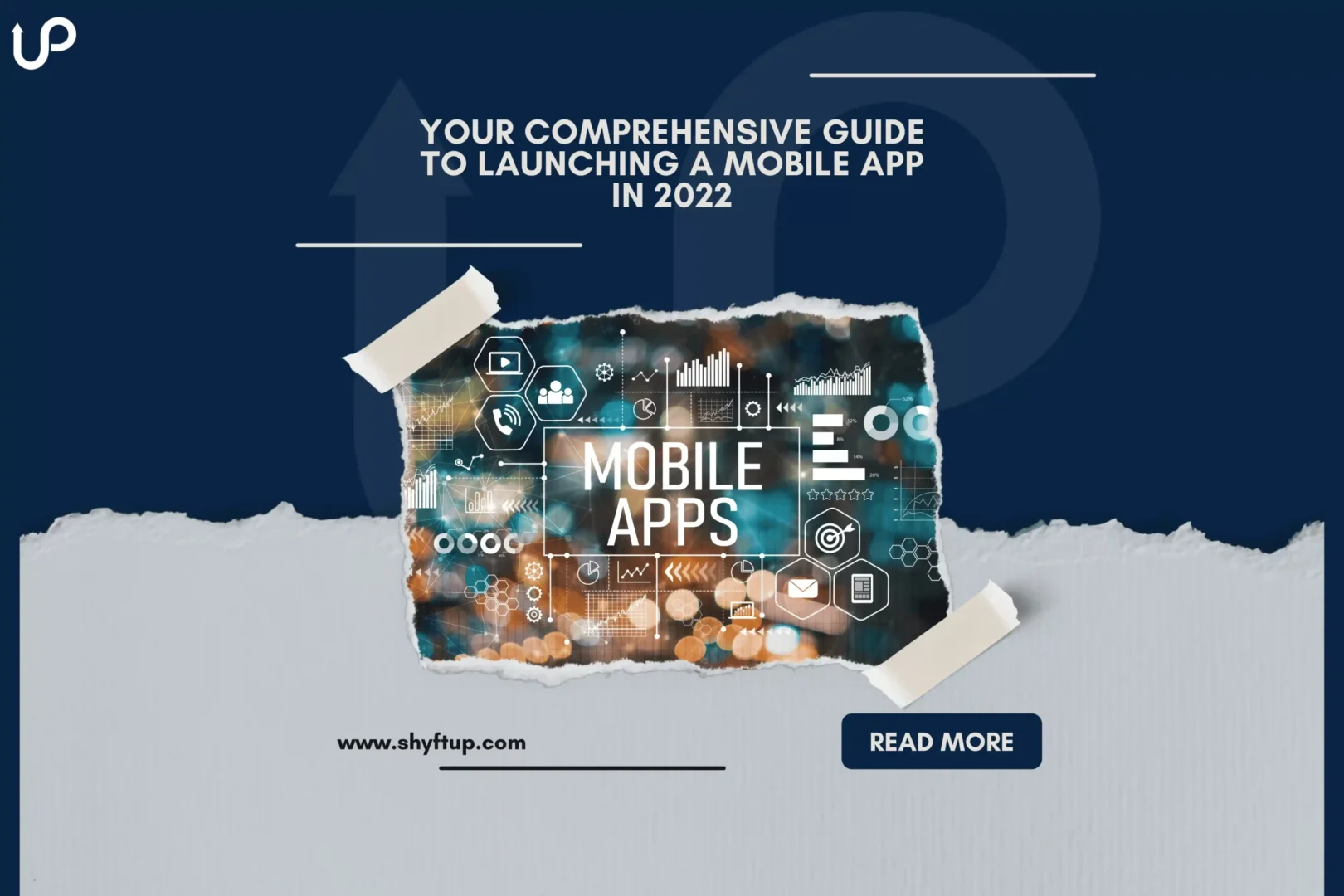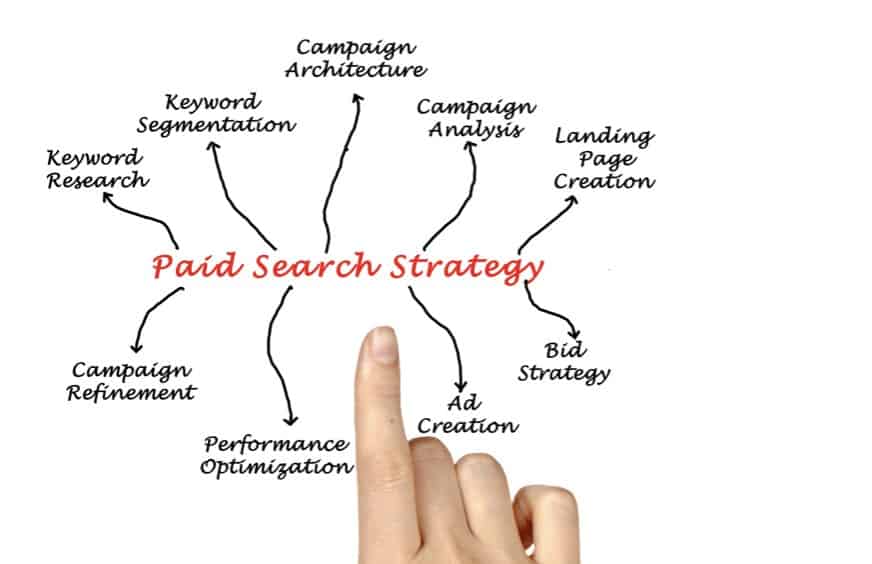
Your Comprehensive Guide to Launching a Mobile APP in 2022
Introduction on how to start an app business
Sign up for a wine club (let’s call it “Exciting Wines”). First, you’ll discover the promise of enticing pre-selected selections sent to your home monthly at discounted prices. Then you’ll likely receive an email or text asking you to download the Exciting Wines app. By doing so, they’ll warrant you to review options, sync the app with your online calendar, buy credits, and see the site’s new brands coming down the pipeline.
The membership process, if seamless, may draw wine lovers in as potentially loyal customers to engage with the Exciting Wines culture for years to come. From that point onward, the club app periodically reminds them of special discounts, events, and unique offers.
The app business is thriving. With over 5 million apps marketing their technologies and over 200 billion downloads expected in 2025, the numbers speak for themselves. Close to 42% of businesses owned by millennials provide apps to their customers. Apps cover the digital space in every industry, including hospitality, travel, marketplaces, retail, banking, health, and more.
So, in light of the above, “how to create an app” is an intriguing idea to bolster your brand. However, it’s not without its obstructions and challenges. Why? Entry barriers are next to non-existent, and competition threatens to be intense. Another intriguing question we’ll try to answer is, “How to make an app start on startup platforms?”
Developing an app is not a cheap exercise from our experience and a reliable customer overview. It can range anywhere from $40,000 for a simple technology to as high as $300,000 for a high degree of sophistication. The average touches $105,000. So, embarking on the development journey is one that can be rewarding or end in dismal financial failure, based on the strategy and approach you decide to take. Your goals should encourage downloads, repeat usage, and promote in-app purchases that keep your consumers enthralled.
Development is phase one, and it’s only the beginning, no matter how meaningfully different you think your technology may be. Getting traction in the market against thousands of apps in your category – many of whom have a headstart – remains a severe challenge. We’re assuming you’ve developed what you believe is a groundbreaking technology – your entry into the App Store (iOS) and Google Play (Android). We’re picking it up at the launch stage, but aspects raised may revisit your app quality. Indeed, if your technology is an “also-ran” or inferior, no amount of good marketing will help you.
How to start an app launch
A. Market Research is an essential step in your journey
We don’t want to belabor the point, but you face tremendous competition from every quarter, as intimated above. The sheer volume of apps entering the marketplaces daily is evidence enough. So, right out of the gate, your app must ride on the kind of differentiation that turns the heads of enough customers. Thus, understanding the ins and outs of the competition is the first order of business:
- Get into the inner workings of the category leaders.
- Look for every opening that gives you an advantage.
- Anticipate their reactions to your moves.
- Budget allowing, interview and abuse-test your app with users (i.e., expensive research under controlled conditions).
- Study reviews to hear what customers are saying about the competition.
B. Set realistic goals
Metrics are the name of the game, bringing your ambitions into the real world. You’re making a six-digit investment in the development alone and significantly more dollars on top of that for the launch. While it’s not unusual to talk about your app, it’s a business; one you want a return from. Most companies look at EBITDA (earnings before interest, tax, and depreciation), ROI (return on investment), and how long it takes to break even. However, some more down-to-earth ratios and numbers will make your venture profitable if you nurture them carefully. They measure:
- Your active install rate.
- The retention rate reflects the number of people who continue to use your app after installation:
- Free mobile apps (earning only from in-app purchases) traditionally enjoy 50% install rates early on, then level down to 30%.
- The number of ratings coming your way.
- The average rating, taking them all into account.
- Benchmarks are between 3 and 4.
- The gross revenue your app generates.
C. Get into all platforms
Cross-platform and Browser Versions of the App are essential considerations. iOS only or Android only won’t cut it. Market share of the app platforms in 2022 boils down to:
- Google Play – 69.74%
- Apple – 29.5%
- Other – 0.77%
Versus four years ago:
- Google Play – 74.39%
- Apple – 19.65%
- Other – 4.8%
Android has captured share since 2018 from the stragglers and iOS from everybody – narrowing the share premium Android enjoys. It’s unwise to ignore either dominant player, and going for both is substantially more cost-effective. We suggest deploying Integrated Development Environment (IDE) software. Professionals use it to build applications that seamlessly converge developer tools onto a single graphical user interface (GUI). Thus, it affords users in both camps (iOS and Android) no-brainer access to your app.
Aside from everything said above:
- Select one store to launch your app and accumulate the highest downloads and ratings possible. Build confidence and learn lessons.
- Also, the early stages are stressful, demanding upgrades and debugging initiatives. So, get the one right before expanding out. Call this exercise test marketing, if you will.
D. Strategize Your Social Media Accounts
Maximize social media to solicit early signups, and leverage the opinion leaders to get reviews. They’re great for showcasing the app while developing and building anticipation with future users. However, there’s a divide between creating interest (i.e., inviting site traffic) and convincing an audience to download. So stay aware of crossing that line and up your game when it’s time to do real business:
- Take all social media channels into account.
- Even the new ones like Pinterest.
- All have a serious function in launching your mobile app.
- Creating visibility with diverse market segments.
- Millennials, in particular, are social media-driven in key aspects of their lives.
- So getting to them without obstruction must take this route.
- Pre-launch excitement is a massive catalyst.
- And social media is the best method to make it happen.
E. Develop engaging content
It’s vital to explain what your app does in simple language that matches the minimum readership level of your lowest audience denominator. When developing the content, keyword insertion is vital for ASO (App Store Optimization), which combines with your downloads to uplift your organic search result ranking. The meta descriptions (Name for iOS and Android) and various other sections provide keyword containment. Use these to the maximum. Be careful not to repeat keywords – it will not improve your position. Indeed, it’s likely to deteriorate your status under algorithmic penalties.
The broad content format must demonstrate your app in every possible situation, including all the following:
- Blog posts.
- Press releases.
- Email marketing copy.
- Support pages.
- About us.
- Services.
Also, copy changes with seasonal promotions, relaunches, and upgrades. As a result, customers are continuously looking for an engaging experience and it frequently comes from how and when you say it rather than what you say.
F. Throw in a video or two
Users, as a rule, love short demonstration videos explaining precisely how your app functions. These animated presentations speak louder than a thousand words. A user-friendly program like Camtasia may be ideal for the job of seamless screen capture and voiceover recording.
Remember, you’re attempting to grab attention from an audience not well-acquainted with your brand. The content and videos are powerful tandem team features in the app store and streamed through social media. Look at the quality of your video versus all the competitors trying to reach the type of customers. Again, there are multiple mobile apps, so differentiating yours will come down to clear communication in all of your marketing materials. A short video demo is one of the easiest ways to display the value of your mobile app convincingly.
G. Launch a dedicated website and store page
Without these, your business lacks credibility. Every user who connects to your app in the store or on social media wants to confirm you have a web presence. No matter how compelling your app technology is, your marketing may grind to a screeching halt without an engaging site. The same goes for your app page in both stores.
You’ll likely find competitors without websites and spotty store pages when doing your market research. Those are your opportunities – the way to play catch up. Capitalize on competitor weaknesses and don’t allow yourself to fall for the same half-baked approach.
Launching a dedicated website for your app is entirely correct because it’s your business — so look like a company that means business. It helps your brand and uplifts your image, giving you a viable springboard for the rest of the journey. It’s where the videos can kick in to add momentum to your proposition. CTAs (calls to action) on the page or site encourages downloads.
H. App Store Optimization – A critical part of the strategy.
ASO and SEO are vital marketing focuses, but they are pretty different. SEO pertains to website optimization for web searchers. ASO aims at getting your app high up in the results when users are searching for apps specifically in app stores. Unfortunately, no expert or professional can tell you definitively how to get your ASO perfect. Why? Because the Google Play and Apple algorithms are trade secrets and keep changing. This much we do know:
- Keyword identification and strategy are a big part of it but alone cannot guarantee ASO success.
- The number of downloads versus your competitors is probably most important because that’s a revenue driver – the elephant in the room that the app stores respect the most.
- Keyword selection depends on balancing term popularity with the caliber of competition you face for those keywords. Essentially you want:
- Good keyword popularity.
- As little serious competition as possible in searches using the keywords.
- To get them in the title (a must) and all the dedicated sections the stores provide.
- Even if your downloads compete with the best, a thin presence of keywords will count against you. And conversely, a stellar keyword strategy without competitive downloads won’t get you far.
- We advise getting a keyword specialist in your corner to smooth out what can be a confusing process.
- Another ASO tactic is showcasing your app with screenshots and, as mentioned above, videos. Also, reviews and ratings – see (O) below.
I. Integrate yourself into the app developer community
Go out of your way to connect with other developers in your app category. Nothing exemplifies synergy better than cooperation between like-minded entrepreneurs working on complementary technologies. Some of the benefits emerging are:
- Suggested shortcuts gleaned from experience.
- Alerts to pitfalls that routinely trip up inexperienced people entering the app store arena.
- Co-marketing ideas that arise once you begin conversations.
When you follow this advice, ensure that you only signal out highly rated developers with significant downloads under their belts. There’s little point in aligning with someone reflecting poor performance or carrying a defective image.
Another invaluable community initiative centers on affiliates: Take the partnership concept up a few notches by creating an affiliate program. It encourages identified enthusiasts to push your app in return for incentives. It’s easy to provide affiliates with a dedicated link that automatically records in-app purchases (and downloads) that align with an instantly accessible reward menu.
App integrations: Do you realize that the average mobile device contains between 60 to 90 downloaded by its owner? You might also have detected that many of these downloaded apps tie in with one another (e.g., you can get into the Uber app through Facebook). It makes things convenient for users, promotes retention, and, of course, should significantly help the download department. Indeed, It’s another compelling reason to meet with other developers – integrating with their apps. The more partnerships you formulate, the quicker the traction in a competitive environment and fewer obstacles in your way.
J. Present to influencers
Numerous parties in the app environment can swing user opinions in your favor. These include journalists and bloggers involved with tech, mobile devices, and digital. Also, don’t spare any effort in contacting all your business associates through their social media channels. In many cases, label the pitch as a “sneak preview to get your valued impressions.”
Zone in on influencers that will (a) help you and (b) benefit the most from using the app in this process. We advise a personalized email outreach program is a fantastic way to ignite opinion leader interest with a drip-drip messaging schedule over a few weeks. Crucial in this arena is the construction of engaging subject lines to ignite reader curiosity. Too many good email messages go unread because nobody opens them.
We advise you to polish your pitch with screenshots, social media links, and video demos in making approaches like this. Prepare yourself with FAQs that you anticipate can emerge from presentations to a savvy audience. If there are bugs in your app, you can believe this diverse community will find them.
Timing is vital here. Pitch a few weeks in advance of your launch with three objectives in mind:
- First, you’ll get a free objective assessment with no frills on the responses.
- Second, you can clean up the act so that unexpected issues don’t mar the launch.
- Third, it gets a buzz going if you can excite the audience with exciting technology.
Suppose you detect that the bloggers and journalists you’ve contacted are reluctant to write up a long-form article? In that case, press them to at least tweet a blog post you’ve prepared to explain the app’s ins and outs. The latter can take the form of a white paper if the technology is complicated.
K. Lock into paid advertising
Although ASO is a crucial consideration for every web developer, coming up high in natural searches doesn’t bypass the compelling power of paid advertising. On the contrary, the latter complements all ASO efforts to increase visualization for your app.
Facebook is a viable paid advertising format, invariably pointing users to your Facebook fan page. It’s here you can welcome them in a friendly, informal way, inviting them to a free download. Alternatively, skip past this and drive the users to your app store pages for an almost instantaneous download option. Circumstances dictate the route that works best:
- Users familiar with your app probably prefer going straight to a rapid download.
- Conversely, if you’re new to the environment or presenting a complex configuration, a more extended explanatory landing page with videos and screenshots will likely work better.
L. Launch an invite-only beta
Before going live with your mobile app, try out a highly successful maneuver practiced by such iconic companies as Spotify, Google+, and Pinterest, namely “invite-only beta.” How does it work?
- Exclusivity colors the theme alongside a “breaking news” event.
- As selected opinion leaders, it makes invitees feel important and valued by you.
- It’s the ideal junction for getting objective UX/UI feedback and ironing out elusive bugs that a tuned-in audience will raise from a customer’s perspective.
- An initiative like this can save your brand image by arriving on the launch date with a cleaned-up presentation.
- Deploy email campaigns (see above) to draw interested parties to the beta event. Position the messages to relay:
- Pre Launch presentation to invitees only.
- Free use for a defined time.
- “I can’t wait to get your valued feedback.”
M. Call to action links everywhere
Your primary goal is getting users to download and stay downloaded for an extended time. So, make it easy for them. Insert links to download your mobile app everywhere you’re engaging users with content, namely on:
- Your blogs
- Mainstream website pages
- Emails
- Social media
- App store pages
- Multiple times on each of the above if the content warrants it.
N. Celebrate with a launch party
It’s an exciting time, so why not. Give your app the send-off it deserves. Invite your inner group, influencers, and anyone who can spread the good news. Journalists, bloggers, and early adaptors are the prominent attendees you want to see there. However, don’t overcrowd the event to ensure all invitees feel like VIPs.
This recommendation aligns with the Influencer section (see J above) and the Invite-Beta (See L above). They integrate to create a buzz around the app, thus encouraging the late mass-market users to connect to the swell of enthusiasm for the new technology. Use the launch party to announce upcoming blockbuster seasonal promotions with the party theme.
O. Reviews and ratings are vital ASO constructs
Google and Apple weigh these heavily in their ASO rankings, so never let this mission escape your attention. The marketplace providers want to know you’re doing everything to keep users happy. Consequently, the following items should occupy the front and center of your priorities:
- Responding without delay to customer queries and complaints.
- Regular upgrades to erase bugs and user interface complications.
- Generating positive reviews with high ratings.
- Converting problem reviews into positive ones with prompt remedies.
- Letting your users know they’re important to you and welcome addition to your app family.
- Finally, leveraging excellent and bad reviews to engage with your user base.
Moreover, consumer transparency drives revenue, confirming that users want to stay informed about new features, upgrades, and seasonal events. We recommend establishing an update log and transmitting the same to your store pages as a record of pivotal changes in your app journey. Actions like this play into higher retention rates. Deploy pop-ups for essential notifications, perhaps leading the audience to a dedicated website landing page explaining the feature. Your brand image should rise to new heights with thoughtful design and content.
To create a feedback culture in your business, insert a button or even a page on your mobile app that invites your users to submit suggestions or make requests. The app format can automatically respond with a “Coming soon” hub displaying breaking news features and events around your app. We recommend deploying a NoSQL database – already proven to assist developers globally in a more streamlined manner.
Conclusion
The takeaway from this article is that developing your app is only the start of a long journey that depends on professional marketing. Ranking in the app stores is a metric every developer should focus on as a priority. Still, it involves juggling many balls without dropping one in the rotation. We have listed crucial considerations from A to O above, each an integral piece of the ASO puzzle.
To fill in gaps, talk to ShyftUp – a leading global User Acquisition Agency. They’ll help you decide on the best-ranking strategy for your app portfolio. ShyftUp focuses on two primary services:
- App Store Optimization (ASO) – unleashing the power of organic user growth by creating boosted visibility on the app stores
- Paid User Acquisition – to help you grow your user base by converting your paid marketing budget into real users, thus revenue. ShyftUp specializes in Apple Search Ads and Google UAC channels.
How much does it cost to start an app?
Developing an app is not a cheap exercise from our experience and a reliable customer overview. It can range anywhere from $40,000 for a simple technology to as high as $300,000 for a high degree of sophistication. The average touches $105,000.
How can I start my own app?
You should have a good idea and the technological know-how to implement it. Developing is only the beginning, no matter how meaningfully different you think your technology may be. Getting traction in the market against thousands of apps in your category - many of whom have a headstart - remains a severe challenge.
How do free apps make money?
With in-app purchases. It's how most apps in modern times monetize their project.
Introduction on how to start an app business
A. Market Research is an essential step in your journey
D. Strategize Your Social Media Accounts
G. Launch a dedicated website and store page
H. App Store Optimization - A critical part of the strategy.
I. Integrate yourself into the app developer community
M. Call to action links everywhere
N. Celebrate with a launch party



